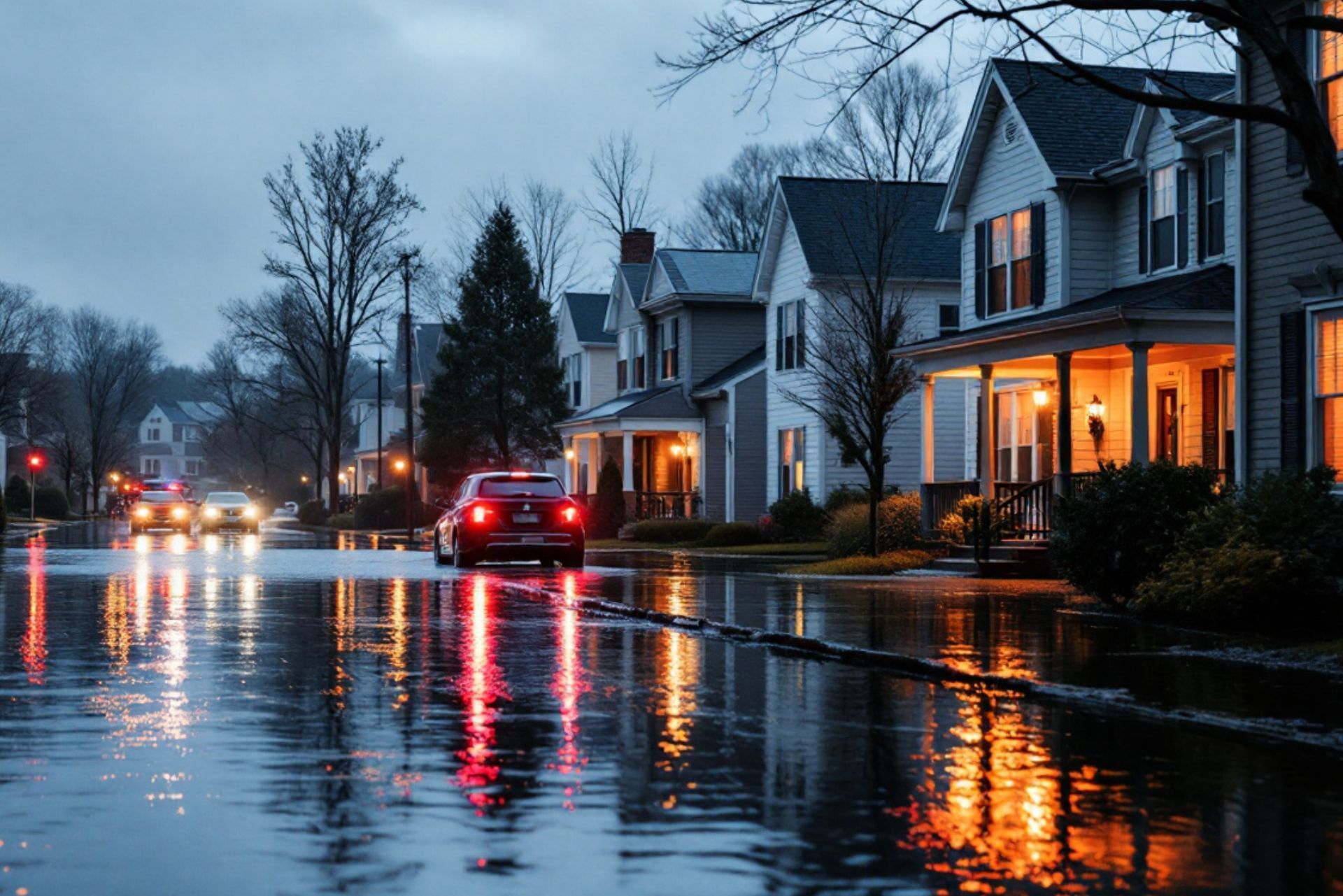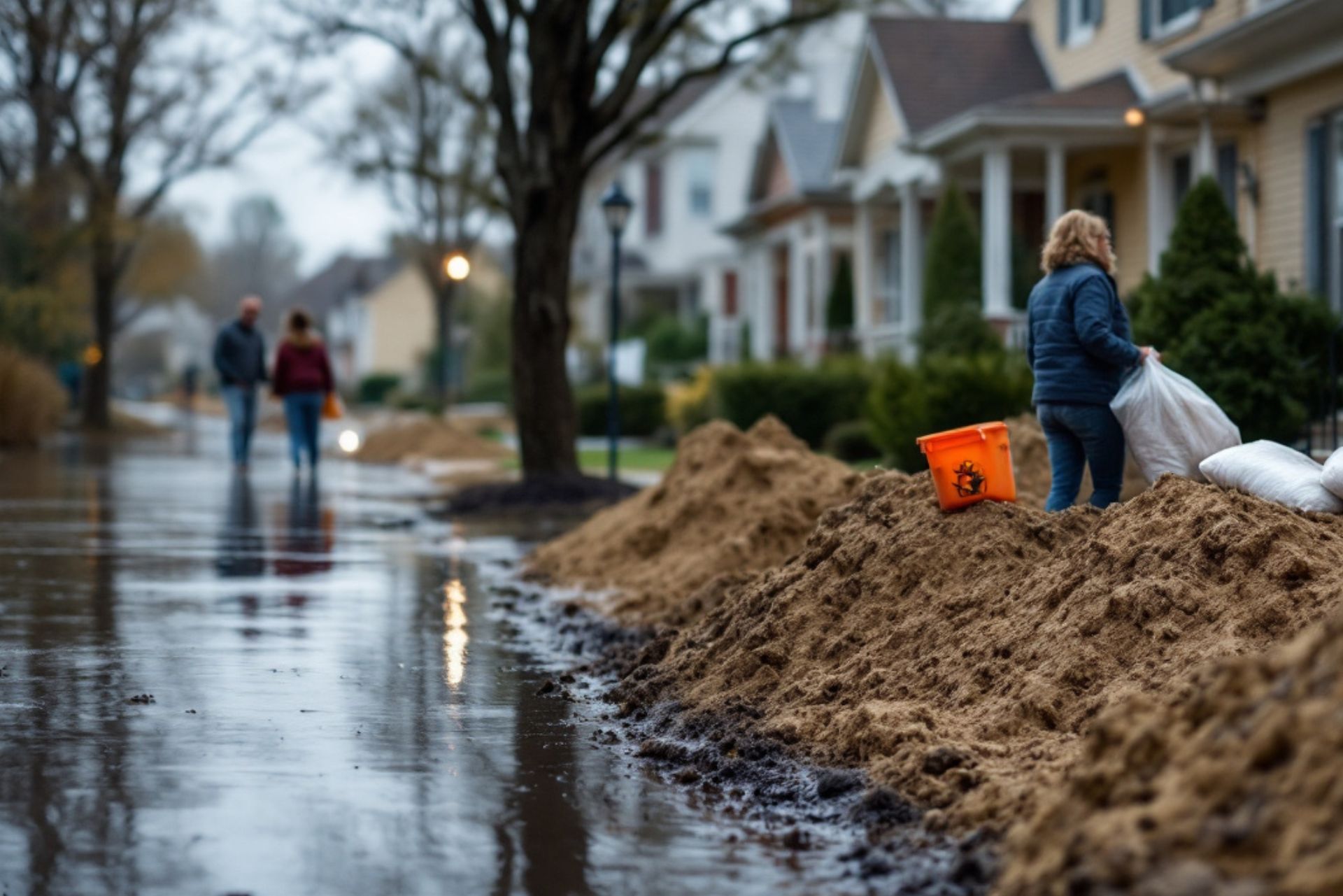Top 3 Recommended Personal Policies
Index
Contact Us
Flood insurance is a crucial component of risk management for
homeowners and businesses in Maryland due to the state’s susceptibility to flooding. Understanding the nuances of flood insurance can help residents protect their properties and finances from unexpected disasters.
Understanding Flood Insurance
Flood insurance is specifically designed to cover losses caused by flooding, a peril excluded from most standard homeowners and business insurance policies. This insurance can be a lifesaver, especially in a state like Maryland, where storms and heavy rains can cause flash floods and more prolonged inundation. The unique geography of Maryland, with its coastal areas and numerous rivers, makes it particularly susceptible to flooding, emphasizing the need for residents to be proactive in securing appropriate coverage.
What is Flood Insurance?
Flood insurance typically comes in two types of coverage: building property coverage and personal property coverage. Building property coverage applies to the structure itself, including the foundation, walls, and utilities. Meanwhile, personal property coverage protects contents like furniture, electronics, and clothing. Together, these coverages can help ease the financial burden of a flood-related disaster. It's important to note that flood insurance often has a 30-day waiting period before it takes effect, so planning ahead is crucial for homeowners who may be at risk.
Why is Flood Insurance Important?
Flooding can cause extensive damage, leading to costly repairs that can cripple homeowners financially. For Maryland residents, flood insurance is vital not only as a protective measure but also as a requirement in many areas, especially if homes are located within designated flood zones. The National Flood Insurance Program (NFIP) offers coverage and is often critical for those looking to secure mortgages in flood-prone regions. Additionally, many people underestimate the frequency and severity of flooding events; even areas that are not traditionally considered flood zones can experience unexpected flooding due to heavy rains or upstream developments. This unpredictability further underscores the necessity of having flood insurance as part of a comprehensive risk management strategy.
Moreover, understanding the specifics of flood insurance policies can help homeowners make informed decisions. For instance, policyholders should be aware of the exclusions that may apply, such as damage caused by sewer backups or landslides, which may require additional coverage options. Additionally, the cost of flood insurance can vary significantly based on factors like the property's elevation, proximity to water bodies, and the overall flood risk associated with the area. By engaging with local
insurance agents and reviewing flood maps, homeowners can better assess their risks and tailor their coverage to meet their specific needs.

The Basics of Maryland Flood Insurance
Becoming familiar with the basics of flood insurance in Maryland—including specific coverage options, costs, and premiums—can empower residents to make informed decisions regarding their insurance needs. Understanding these elements is crucial, especially in a state like Maryland, where coastal areas and riverine systems can lead to significant flooding events. By educating themselves about flood insurance, residents can better protect their homes and belongings from potential damage.
Coverage and Policies
Maryland flood insurance policies, typically provided through the NFIP, offer varying levels of coverage. Homeowners can generally purchase between $250,000 and $500,000 for building coverage, while personal property coverage ranges from $100,000 to $200,000. However, those with properties deemed higher risk may want to consider additional private flood insurance policies to maximize their coverage. It’s also important to note that standard homeowners insurance policies often do not cover flood damage, making flood insurance a necessary safeguard for many Maryland residents. Additionally, flood insurance can cover not only the physical structure of a home but also essential systems such as plumbing and electrical systems, as well as certain appliances, providing a comprehensive safety net in the event of a disaster.
Costs and Premiums
The cost of flood insurance premiums in Maryland varies based on several factors, including the property’s location, flood zone designation, and the amount of coverage selected. On average, Maryland residents can expect to pay upwards of $700 annually, but this can fluctuate significantly based on the aforementioned variables. Properties located in higher-risk flood zones typically incur higher premiums. Moreover, factors such as the elevation of the property, the age of the home, and the building materials used can also influence premium rates. Homeowners may find it beneficial to invest in flood mitigation measures, such as elevating their home or installing flood vents, as these improvements can lead to lower insurance costs over time. Understanding these nuances can help residents navigate the complexities of flood insurance and potentially save money while ensuring their homes are adequately protected.
The Role of the Federal Emergency Management Agency (FEMA)
FEMA plays an integral role in regulating and managing flood insurance through its National Flood Insurance Program. The agency not only offers guidelines for insurance but also works to inform and assist residents in flood-prone areas. This proactive approach is crucial, especially in regions where flooding can occur with little warning, allowing communities to better prepare for and respond to natural disasters.
FEMA's National Flood Insurance Program in Maryland
The NFIP allows Maryland residents to access affordable flood insurance through participating insurance companies. FEMA produces flood maps that delineate flood zones, helping residents understand their risk and choose appropriate coverage. Additionally, the program encompasses mitigation efforts and grants for communities to improve flood resilience. These grants can fund projects such as levees, flood walls, and drainage improvements, which not only protect individual properties but also enhance the overall safety of neighborhoods vulnerable to flooding.
How FEMA Maps Influence Flood Insurance
FEMA flood maps identify Special Flood Hazard Areas (SFHAs) and determine flood insurance requirements for properties. Homes located in SFHAs usually require flood insurance if the mortgage is federally backed. Understanding these maps can assist homeowners in recognizing their risks and preparing accordingly. These maps are updated regularly, so it’s imperative for residents to stay informed about any changes that may impact their coverage needs. Furthermore, FEMA encourages community engagement in the mapping process, allowing local governments and residents to provide input that can lead to more accurate risk assessments. This collaborative effort ensures that the flood maps reflect the most current data, including recent weather patterns and land use changes, thereby enhancing the effectiveness of flood risk management strategies.
How to Purchase Flood Insurance in Maryland
Purchasing flood insurance in Maryland involves a few critical steps, including selecting an insurance provider and thoroughly understanding the specifics of your chosen policy.
Choosing an Insurance Provider
To purchase flood insurance, Maryland residents can contact their current homeowners’ insurance provider or seek quotes through various other insurers. It’s essential to compare coverage, terms, and premiums from multiple sources to ensure you get the best possible rate. Also, working with an experienced insurance agent familiar with Maryland's laws and regulations can provide invaluable guidance. Additionally, consider looking into the National Flood Insurance Program (NFIP), which offers federally backed flood insurance policies. This program can be particularly beneficial for residents in high-risk flood zones, as it often provides coverage that standard homeowners' policies do not. Understanding the distinctions between NFIP policies and private insurance options can help you make a more informed decision.
Understanding Your Policy
Once a policy is selected, it's crucial for policyholders to take the time to read and understand the details within it. Flood insurance policies can contain unique stipulations about coverage limits, exclusions, and conditions for filing claims. Familiarizing yourself with these aspects can prevent misunderstandings and ensure a smoother claims process in the event of a flood. Moreover, it's wise to review the policy annually or after significant changes to your property, such as renovations or additions, which could affect your coverage needs. Keep in mind that flood insurance usually has a 30-day waiting period before it takes effect, so planning ahead is essential, especially if you live in an area prone to flooding. Understanding the claims process, including how to document damages and the necessary steps to file a claim, can also save you time and stress during a crisis.
Frequently Asked Questions About Maryland Flood Insurance
Many residents have questions about the intricacies of flood insurance in Maryland, particularly regarding its requirements and coverage specifics.
Is Flood Insurance Mandatory in Maryland?
While flood insurance is not universally mandatory across Maryland, it is required for homes in high-risk flood zones that have federally-backed mortgages. Homeowners in these zones must obtain and maintain flood insurance to comply with their mortgage terms. However, even residents in low to moderate-risk areas are encouraged to consider flood insurance, as flooding can occur anywhere. Maryland's unique geography, with its proximity to the Chesapeake Bay and numerous rivers, makes it susceptible to heavy rainfall and storm surges, further emphasizing the importance of being prepared for potential flooding.
What Does Flood Insurance Cover and Not Cover?
Flood insurance typically covers damage to the structure arising from flooding, as well as personal property within the home. However, it's essential to note that it does not cover damages from other sources, such as sewer backup or sump pump failure, unless additional endorsements are added to the policy. Homeowners should assess these exclusions and consider additional coverage options based on their individual needs. Furthermore, understanding the specifics of what constitutes a "flood" under the policy is crucial; for example, a flood is defined as a temporary condition where two or more acres of normally dry land or two or more properties are inundated with water. This definition can sometimes lead to confusion, so homeowners should clarify these terms with their insurance agents to ensure they have the right protection in place.

Preparing for a Flood in Maryland
Preparation is key to minimizing damage and ensuring safety during a flooding event. Understanding flood safety tips and post-flood recovery processes can prove beneficial for Maryland residents.
Flood Safety Tips
Before a flood occurs, homeowners should create an emergency plan that includes evacuation routes and communication systems. Additionally, having an emergency kit with essentials such as water, non-perishable food, and first-aid supplies is crucial. Staying updated with local weather forecasts and alerts can also help individuals prepare for potential flooding risks. It is also advisable to familiarize yourself with the local geography, as certain areas may be more susceptible to flooding than others. Knowing the history of flooding in your area can provide insight into how severe a flood might be and help you make informed decisions about your safety and property.
Post-Flood Recovery and Insurance Claims
After a flood, it’s vital to document the damage thoroughly before making repairs. Take photographs and keep receipts for any expenditures relating to cleanup and restoration. When filing an insurance claim, be sure to report the damages as soon as possible, and provide all required documentation to facilitate a smoother claims process. Engaging with a restoration specialist can also assist in ensuring repairs meet safety standards and help accelerate recovery time. Furthermore, residents should be aware of the potential for mold growth in the aftermath of a flood, which can pose serious health risks. Proper ventilation and dehumidification are essential to mitigate this risk, and homeowners should consider professional mold remediation services if the situation warrants it.
In addition to immediate recovery efforts, it's important for residents to engage with their community and local government resources. Many counties in Maryland offer assistance programs for flood recovery and rebuilding efforts, which can provide financial aid or resources for those affected. Participating in community meetings can also help residents stay informed about future flood prevention initiatives and infrastructure improvements that may be planned in their area. By fostering a sense of community resilience, Maryland residents can work together to better prepare for and respond to flooding events, ensuring that they are not facing these challenges alone.
Understanding Maryland flood insurance is fundamental for residents living in flood-prone areas. By grasping essential aspects ranging from policy details to preparation tips, homeowners can better protect themselves from the financial and emotional stress of flood-related disasters.
For over 40 years D.H. Lloyd & Associates has provided commercial insurance solutions covering multiple facet of business risk.
QUICK LINKS
CONTACT US
Phone:
202-223-1506
Email: contactus@dhlloyd.com
Address: 1625 K St NW, Washington, DC 20006, United States
All Rights Reserved | D.H. Lloyd & Associates | Privacy Policy | Legal Disclaimer | Sitemap | Built & SEO'd by Convirtue

